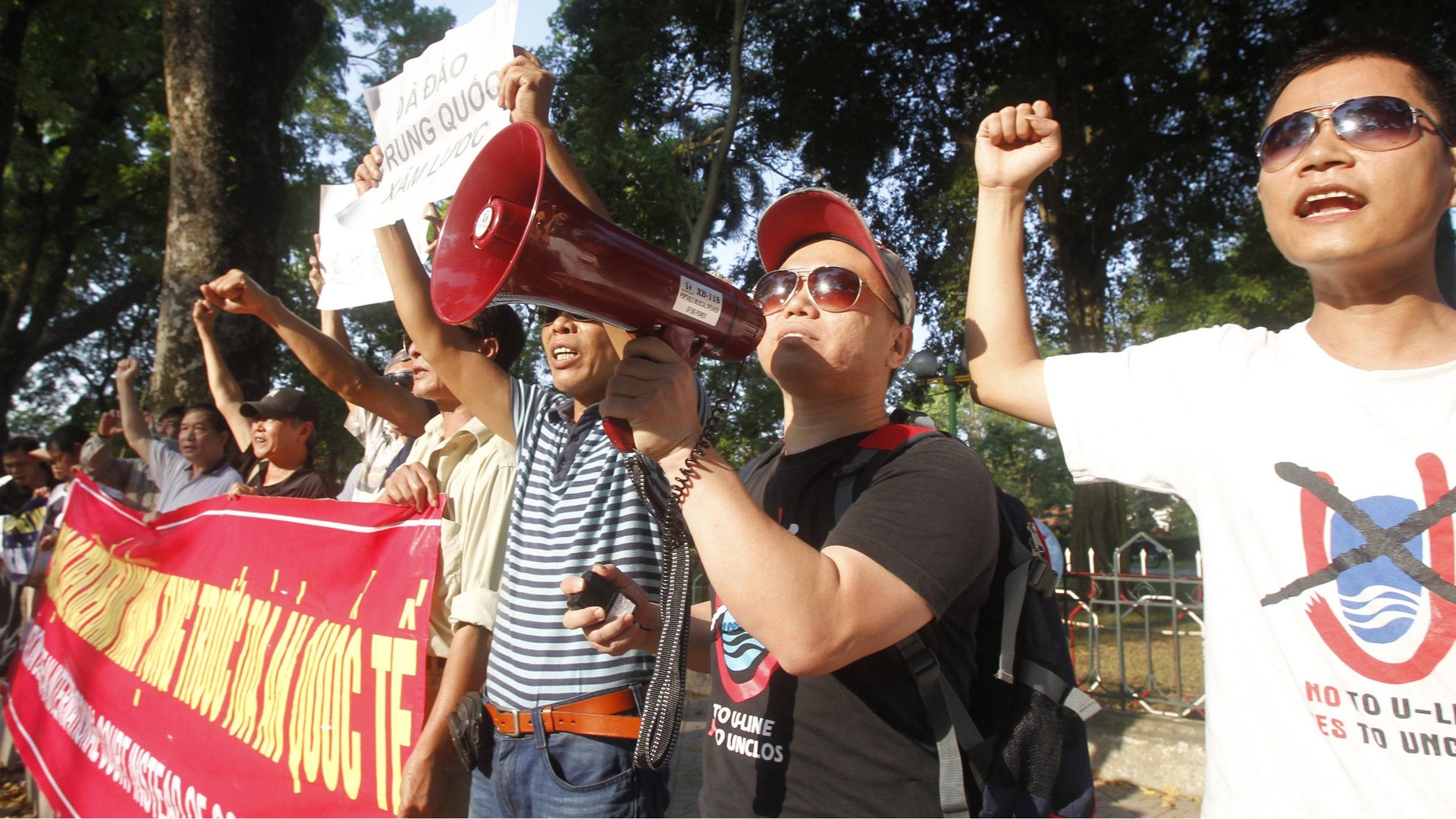Taiwan and Singapore are paying the price for China’s provocative maritime move
Some 19,000 workers in Vietnam rioted yesterday, burning down and damaging as many as 15 factories in an outburst of rage over China’s decision to deploy an oil rig near a disputed chain of islands. Regardless of the trigger, the aggression was ultimately misplaced: Most of the torched facilities were owned by companies based not in China but in Singapore, Taiwan, and South Korea.


Some 19,000 workers in Vietnam rioted yesterday, burning down and damaging as many as 15 factories in an outburst of rage over China’s decision to deploy an oil rig near a disputed chain of islands. Regardless of the trigger, the aggression was ultimately misplaced: Most of the torched facilities were owned by companies based not in China but in Singapore, Taiwan, and South Korea.
In Vietnam, mass demonstrations are almost never allowed by the government. But Hanoi was so incensed by Beijing’s provocation in the South China Sea that it authorized anti-China protests in cities across the country. But those officially-sanctioned protests then spun out of control, giving rise to the violent ransacking of factories in southern Binh Duong province.
As in China two years ago, when protests against Japan’s disputed claim to a separate island chain turned violent, the recent events in Vietnam underscore how volatile the consequences can be when governments stoke nationalist fervor. That’s an especially scary lesson right now in Asia, where territorial disputes over islands in the East and South China Sea are laying bare historical enmities and risking armed conflict.
The stand-off between China and Vietnam takes place at the same time as a parallel dispute between China and the Philippines. A group of Chinese fisherman were detained by Philippine authorities and accused of harvesting endangered turtles, and today Manila accused Beijing of reclaiming land on a disputed reef, possibly to build an airstrip or military base.
Following the riots in Vietnam, Taiwanese, Japanese, and South Korean businesses shut their plants in the country and “hung Vietnamese flags outside their business in a bid to deter looters,” according state-run news site VNExpress. The unrest threatens the country’s hard-won success in establishing itself as a low-cost manufacturing center for foreign-owned firms. Even before the China incident raised tensions, violent labor disputes have periodically broken out at Vietnamese factories.
Companies in technology and textiles have shifted their operations to Vietnam in recent years, largely in response to higher labor costs in China and other developing countries. But that trend won’t continue long if there’s a plausible chance of those factories getting burned to the ground.
